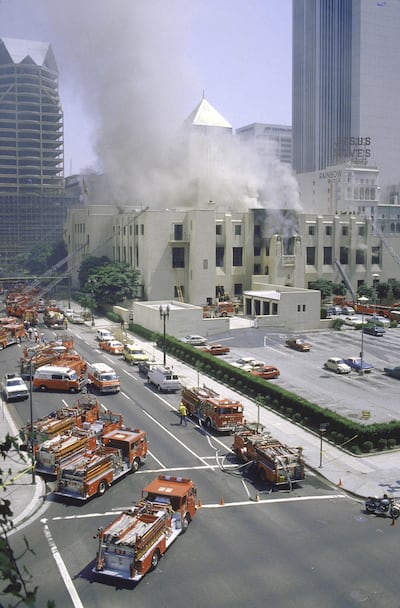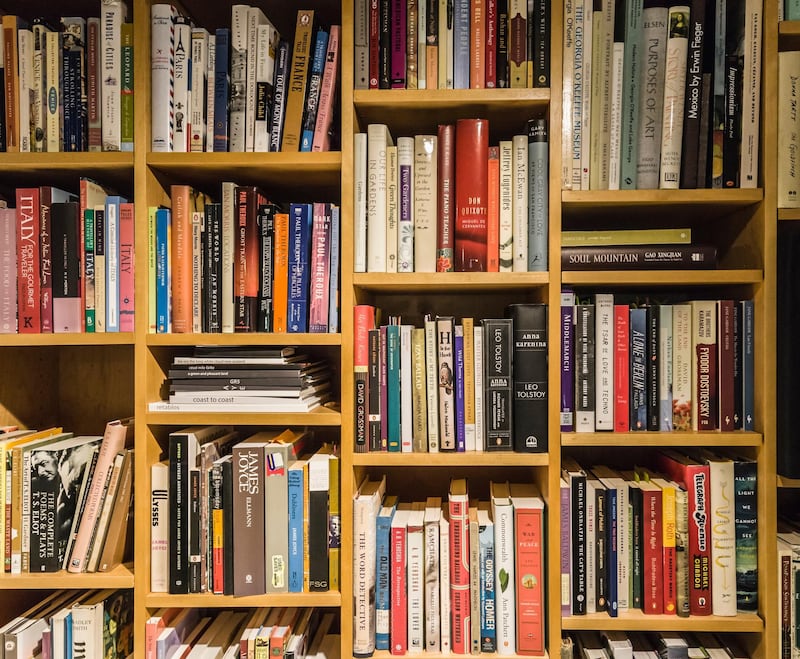On the morning of April 29, 1986 a devastating fire broke out at Central Library in downtown Los Angeles. When the smoke detectors activated the alarm just before 11am, the 400 or so people inside calmly made their way out of the building.
The system was old and false alarms were par for the course; the sound "had come to possess all the shock value of a clown horn", writes Susan Orlean in The Library Book. However, when fire engines arrived and fire fighters ventured inside to investigate, they found smoke in the fiction stacks, "threading along a shelf of books that started with a Robert Coover novel and ended with one by John Fowles". In a matter of minutes, these books were engulfed by flames.
The fire was catastrophic. The chimney-like structure of the stacks combined with the two million books in the library's collection made for a burning ratio of oxygen to fuel so perfect that it mimicked laboratory conditions. The blaze's temperature reached an astonishing 900°C – hot enough to melt and buckle the steel stacks – with the flames burning so hot that they were colourless.
Extinguishing the fire took nearly all the city's firefighting personnel and resources. After seven and a half hours, and three million gallons of water, the blaze was eventually extinguished. Internally, the building was in ruins; 400,000 books had been completely destroyed, and a further 700,000 volumes badly damaged by smoke and or water.

Shocked by these facts and figures, I began regaling them to my partner only for him to stop me. He couldn’t bear to hear about the destruction of so many books. It actually made him feel sick, he said. If this strikes you as odd, consider this: although physically unscathed by the fire, many of the librarians suffered PTSD in its aftermath, many of their marriages broke down and a psychologist was brought in to conduct group therapy sessions with the anxious, depressed staff.
"The deepest effect of burning books is emotional," Orlean writes. From 213BC, when Chinese emperor Qin Shi Huang incinerated all history books that contradicted his version of the past, through Nazi Germany's Feuerspruche, Joseph Goebbels' pet project in which the works of Jewish authors were ceremonially burnt, to the irreplaceable manuscripts, some dating from the 13th century, that retreating extremists destroyed in Timbuktu in 2013; there is a particular horror associated with the destruction of the written word. "When libraries burn," Orlean continues, "the books are sometimes described as being 'wounded' or as 'casualties,' just as human beings would be."
Readers familiar with Orlean's work – both her writing for The New Yorker, where she has been a staff writer since 1992, and her books, in particular the bestselling The Orchid Thief – will open up The Library Book expecting something special and they won't be disappointed. Orlean leaves no stone uncovered in her research, her writing is elegant and she brings a wonderfully empathetic approach to her subject, but what is most ingenious about the book is how it comes to mimic the institution that is her subject. The Library Book is its own impressive repository of material, the depth and richness of which continued to excite and astound me with every new chapter.
"Sometimes… you just can't believe such a book exists," one of the librarians who works at Central Library today told Orlean of the volumes he finds himself issuing to patrons. The Library Book examines the wealth of resources available in our libraries, alongside the increasing number of services these institutions offer in terms of community outreach. In the course of her research, for example, Orlean was told over and over again that the "defining question" facing libraries today is "how – and how much – to provide for the homeless".
The story of the fire is the tinderbox that sets the narrative ablaze, but The Library Book is so much more than an account of this singular event. It's a mystery story in that it follows the investigations of whether the fire was arson or accident. But it's also a historical account: that of Central Library, which opened in 1926, though the earliest public library in the city opened its doors eight decades previously, in 1844; and of Los Angeles. Front and centre are a cast of unforgettable characters.
There's Harry Peak, the aspiring actor who spun tall tales and was suspected of starting the fire. Or take Mary Foy, Los Angeles' first female city librarian and only 18 when she was given the job in 1880, which was astonishing given that women were not yet allowed their own library cards nor were they permitted anywhere in the building other than the Ladies' Room.
And Charles Lummis, whose appointment in the same role in 1905 incited the Great Library War (his predecessor, Mary Jones, who was being asked to step down on the grounds of gender, initially refused to relinquish her position). Among Lummis's many eccentricities was his creation of "The Bibliosmiles", a group of like-minded librarians who hated the prevailing image of their kind as "pompous".
Libraries are founts of knowledge, depositories of human endeavour, bastions of democracy and places of education and of refuge. Orlean’s excellent and important book reminds us of the many faces of our often under-appreciated public institutions.
_______________
Read more:
Seven women on longlist for 2019 International Prize for Arabic Fiction
Absorbing account of Afghan history can stand test of time
Newly translated book offers child's perspective on cruelty and war
_______________






